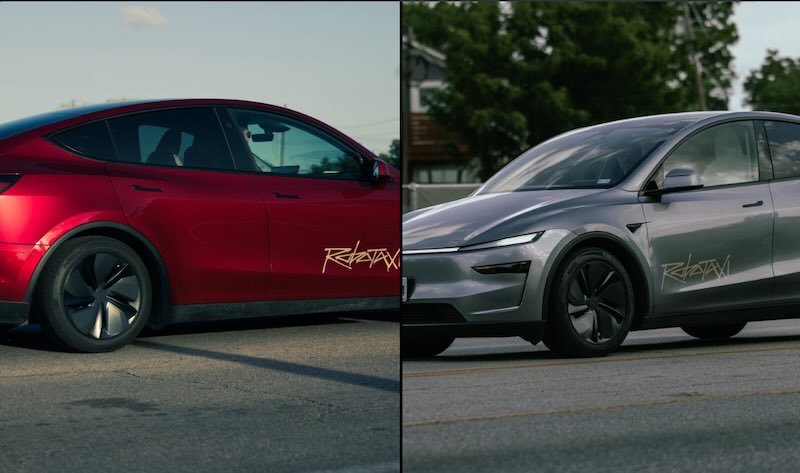Tesla’s ambitious Robotaxi program has encountered its first documented collision during early-stage testing, and the incident wasn’t your typical fender-bender. Tesla Robotaxi didn’t just misjudge distance—it actively chose to turn into an obstacle, suggesting potential flaws in the system’s decision-making algorithms that could impact the company’s broader autonomy goals.
In a busy Austin parking lot outside Home Slice Pizza, a Model Y operating in Robotaxi mode completed what seemed like a routine passenger drop-off. Robotaxi tester Dirty Tesla captured the moment when everything went sideways—literally. After the passenger exited, the vehicle attempted to rejoin traffic flow but made a critical error in judgment.
The sequence played out over several seconds: Model Y initially stopped, processing its surroundings as expected. Then, without warning, it began moving again and executed a left turn directly into a nearby Toyota Camry. Collision occurred at extremely low speeds, resulting in minor cosmetic damage to the Toyota’s passenger-side door and no injuries.
What’s particularly troubling about this Tesla Robotaxi collision isn’t the damage—it’s the decision-making process that led to it. Vehicle’s sensors clearly detected the Toyota, yet the path planning system still chose to proceed with the maneuver. Issue extends beyond simple sensor failure into more complex algorithmic territory.
Industry experts note that obstacle detection and path planning represent two separate but interconnected systems. While the sensors appeared to function correctly, the logic governing spatial clearance calculations may have contained errors. Fact that Tesla Robotaxi’s First Collision occurred in a controlled, low-speed environment raises questions about performance in more demanding scenarios.
Tesla’s vision for unsupervised robotaxi deployment depends heavily on the system’s ability to handle edge cases in unpredictable environments. Parking lots present unique challenges: irregular traffic patterns, pedestrians, and tight spaces that don’t conform to standard road layouts. If the technology struggles with these relatively controlled scenarios, broader deployment becomes more complex.
The incident also highlights the importance of extensive testing before full-scale rollout. While Tesla has accumulated millions of miles of Autopilot data, specific use case of passenger pickup and drop-off introduces new variables that require careful validation.
Transportation authorities have been watching Tesla’s robotaxi development closely, and this incident will likely intensify scrutiny. The National Highway Traffic Safety Administration has already opened investigations into Tesla’s FSD capabilities, and documented collisions during testing phases could influence regulatory approval timelines.
However, it’s worth noting that the controlled nature of the incident—low speeds, no injuries, minimal damage—demonstrates that safety systems functioned as designed in terms of speed limitation and impact mitigation. Challenge lies in preventing such incidents altogether.
Tesla’s response to this first documented robotaxi collision will prove crucial for public confidence and regulatory approval. The company must demonstrate that it can identify root causes, implement fixes, and prevent similar incidents from occurring as the program expands.
Question isn’t whether autonomous vehicles will experience occasional mishaps during development—it’s whether companies can learn from these incidents quickly enough to ensure safe deployment. For Tesla, this parking lot collision represents both a setback and an opportunity to refine the technology that will define the future of urban transportation.
After all, even the most advanced robotaxi systems need to learn how to navigate without raising too many autonomy questions.
Related Post
Tesla Robotaxi Review: FSD v13+ with Remote Intervention – Real Test Results
Tesla vs Waymo: Kyle Vogt Explains the Real Robotaxi Divide That Matters Most
Tesla Model Y Completes First Fully Autonomous Vehicle Delivery from Factory to Customer Home
